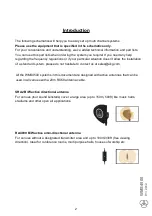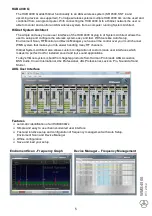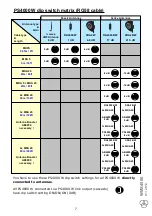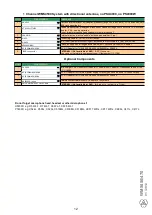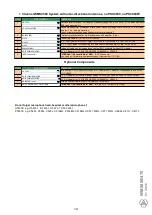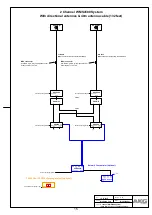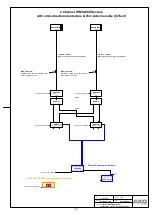
Technical Information
Wireless Basics
Ø
Every wireless microphone system has to operate on
one
specific frequency
Ø
Transmitter and receiver of a system need to work on the
same
frequency
Ø
Two transmitters
cannot
be used with one receiver at the same time
Receiver/Antenna Placement
Ø
Direct line of sight between transmitter and receiver antenna
Ø
Keep the receiver/antennas at least 5 ft. (1.5 m) away from all transmitters
Ø
Keep the receiver antennas at least 5 ft. (1.5 m) away from any big metal object, wire
(particularly wire mesh) or sheet metal structures, walls, ceilings, etc.
Ø
Do not place the antennas in closed areas (behind walls)
Ø
Place the receiver at least 5 ft. (1.5 m) away from any equipment that may emit RF
radiation such as lighting racks, fluorescent lamps, digital effect units, or PCs
Squelch
Ø
Standard: Carrier squelch, manual
–
Operates strictly on the signal strength of the signal.
–
If received signal strength drops under the adjustable squelch threshold the
audio output is muted
Ø
Advanced: Tone Code (only WMS470/4500)
–
The audio turns on only in the presence of the correct tone code and an
adequate signal strength (-100dbm)
–
Lock out of all signals except ones with the correct key.
Intermodulation
Intermodulation is the result of two or more signals of different frequencies
being mixed together, forming additional signals that are not harmonic
frequencies of either.
By using more than one transmitter simultaneously at the same location,
intermodulation happens in the receiver and/or transmitter.
These
intermodulation products are generated in the
bandwidth that you are using.
To avoid intermodulating frequencies, we offer pre-calculated frequencies as
presets in the SR450 and SR4500 Receiver. Please, make sure that when setting
up a multi channel system, all your receivers are set to the same country preset
(NAME) and group. Use the automatic channel function (auto setup) to scan for
free frequencies in your venue.
W
M
S
4
5
0
0
0
1
/
2
0
1
2
4


